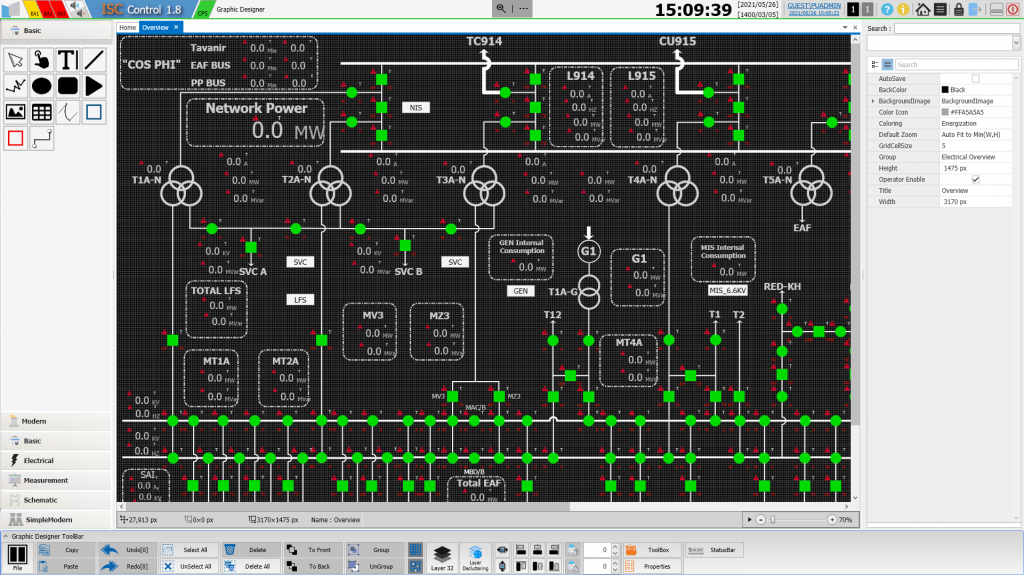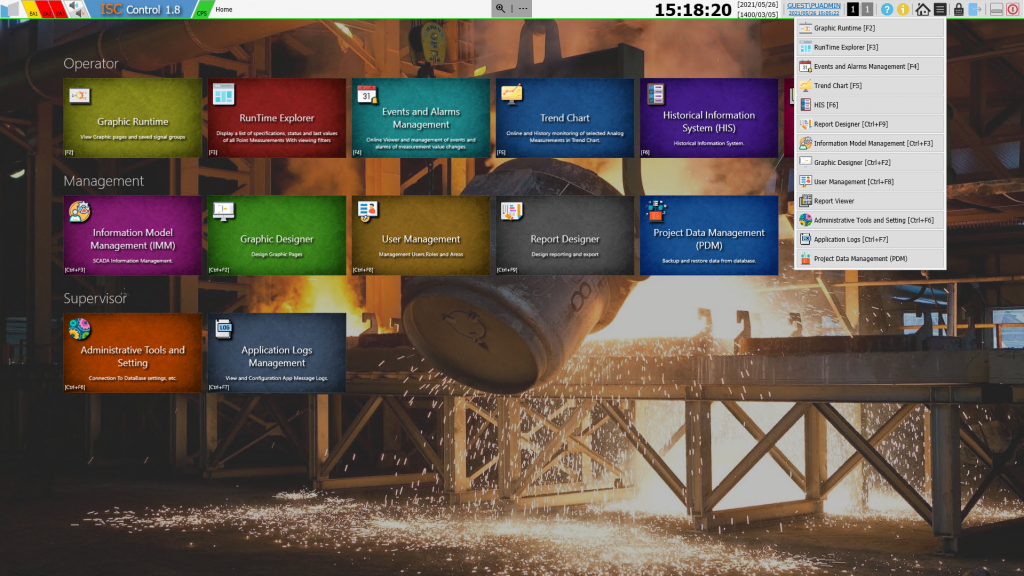SCADA Control Center for Electricity and Fluid Networks
Irisa-SCADA as an Iranian SCADA system is considered as a native SCADA system
Information Systems
Irisa Smart Organization
SCADA Control Center for Electricity and Fluid Networks
In urban and industrial electricity networks, the electricity generated is transmitted through the transmission network to distribution networks. In these networks, a data collection system and monitoring and control are required through which the desired network can be controlled manually or by designing programs.
IRISA-SCADA as an Iranian SCADA system is considered as a native SCADA system that originates from the country’s steel industries, but because of high standards and technical requirements in this field of industries, also based on their high consumption and voltage levels up to the highest voltage level of a country’s electricity networks (400 kV), has significant similarities with the above electricity distribution and distribution network of the country and therefore by observing the requirements and receiving the necessary certificates from reputable institutions intends to be used in all electricity networks.
On the other hand, this system has been made with full knowledge of the prominent European systems that are very valid and efficient, and its foundations are based on deep concepts on the concepts in this field. This system is also used in water and other fluid networks with its appropriate libraries and features.








